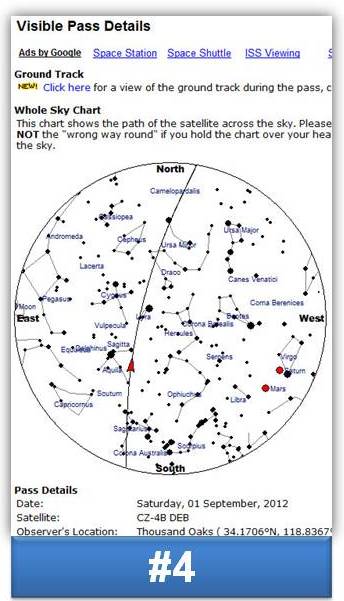 Did you know that you can see orbiting satellites in the night sky? I mean the ones we launched from Earth!
Did you know that you can see orbiting satellites in the night sky? I mean the ones we launched from Earth!
The moon is our only natural satellite and there is a LOT to see there (other planets in our system have more, some many, many more). I think most people have seen the moon and I’ll cover that in future posts.
I want to tell you about the other satellites right now though; the modern satellites that are a little harder to see.
You just need to know what you’re looking for, and you need to look up! Of course, you can catch some that way, and I have. It would be much easier to see them if you looked at the right time, and in the right place.
The best times to see these ‘space age’ satellites in orbit around our planet is a little after sunset and a little before sunrise. This gives you a dark background with potential sunlight reflecting off the surface of the satellite in orbit. As you pass deeper into the night, the satellite may pass overhead, you just won’t see it because the conditions aren’t right.
There’s a very nice tool you can get online to help you in your quest.
Start with the Heavens Above link. It seems pretty easy to navigate. If you run into trouble, here’s a basic path to follow…
Visit Heavens Above (click the link) > once there you will click “from database” > select Country from the dropdown menu > enter CITY NAME ONLY in the next box on the right > you may need to make a choice, like I did…
Once you selected your city, you’ll be back on the main page and it should include:
Current observing site: [Thousand Oaks, 34.1706°N, 118.8367°W] with YOUR city and its location in latitude and longitude, in numbers, between the brackets instead of mine (you won’t see the brackets either).
On that page, you can choose any of the blue links under Satellites, Astronomy or Miscellaneous. Let’s keep it simple and click on “ISS” which is the first blue link you come to after ‘Satellites’ and it’s a very exciting satellite to see in the night sky.
I once saw the Space Shuttle undocking from the ISS when I lived in Arizona.
Sometimes, you get a “No visible passes…” message like I did. So I know that ISS will not be overhead in the next week or so. If you click on the radio button in front of ‘all’ you get a chart like this:
If you want to actually see a satellite flyby, click on your browser’s [back] button and start over. Satellite tracking requires a little patience sometimes.
When I’m looking for satellites, I tend to use the section in the middle:
Daily predictions for all satellites brighter than magnitude:
(brightest) 3.5 | 4.0 | 4.5 (dimmest)
I like to go for the 3.5 magnitude ones because they are just more fun. If you have excellent eyesight, by all means, try for the dimmest satellites!
REMEMBER – these are predictions! You don’t always get to see the satellite you’re looking for. It’s very fun to look even so.
Well, that’s a little better…
I can look for all sorts of satellites tonight. There’s a really high one right on top too.
A bit of explanation is in order I can tell.
Here’s the first line (I’m looking for that one tonight!):
Under ‘Brightness’ – the smaller the number, the brighter the satellite may appear. It’s a bit odd and that’s how it is. Maybe I’ll go into it or find something that explains it another time. You’re probably more interested in seeing some satellites, I’m sure.
Start|Highest Point|End – describe the path the satellite is predicted to take overhead tonight.
Below each:
Time: Just what you think, in military terms for clarity.
Altitude: How high into the sky to look. Imagine the horizon as 0 degrees and straight overhead as 90 degrees with 1/2 way in between as 45 degrees and you can see that 10 is low while 73 is high – best for viewing
Azimuth: Which direction to look, in compass terms. N, E, S, W, NE, SW, SE and NW are all pretty simple. When you get to terms with three letters like we see in the example – SSE, ENE – that direction lies between the major 8 I listed previously. I’m told that the direction is closer to the one with 2 identical letters.
Lots to digest, I know. Go look for a few satellites. When you see them, you’ll start gaining the confidence to understand all those numbers and letters. Just realize that they usually start low, climb the sky and finish low in the sky again near the end of the flyby.
Now for the fun part…
A visible, orbiting satellite will look just a little bit like an airplane flying overhead. If you see any colors or blinking lights, it IS an airplane!
A satellite moves a little differently. It’s a bit more serene and you kind of think ‘that’s a weird plane’ when you see it. It will also ‘wink out’ and sometimes it fades right before it does as it floats across the sky.
Once you’ve seen one, you’ll know the differences for yourself!
An airplane carries lights which you see for the entire flyby.
You see a satellite because 1) it’s close enough (not a geosynchronous orbiting satellite, they are much further out – you need a telescope to see them, remember?) and 2) sunlight reflects from the surfaces to your eyes until the satellite travels into the shadow of the Earth.
Here are some of the satellites you might see in the night sky…
ISS – International Space Station
Tiangong
Genesis I
Genesis II
Envisat
HST – Hubble Space Telescope
Radio Amateur Satellites
Iridium Flares
and more
There is a lot more going on at Heavens Above. When you find your location, do some browsing around, it’s a great source for everyday spacers!
Any questions? Put them in the comments and I’ll get an answer for you!
NOTES:
*This is a Kid Friendly Activity
*Any Age
*No Cost

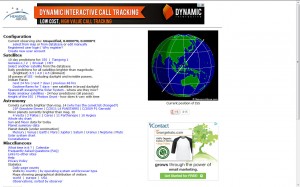

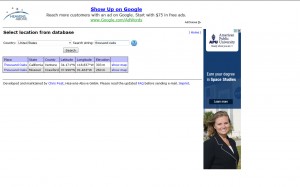
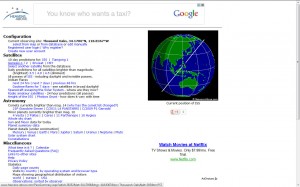

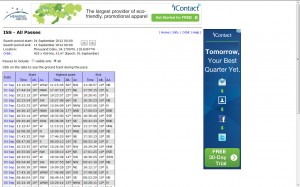
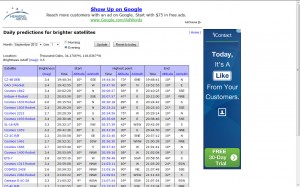






































Pingback: Stargazing | Everyday Spacer
Pingback: HamSats Part 1 | Everyday Spacer
Pingback: HamSats Part 3 | Everyday Spacer
Pingback: Spotting Tool | Everyday Spacer
Great story. It shows the inter-dependance of many countries throughout the world to enable data to be accumulated from interplanetary spacecraft and science-based space missions using the Satellite Tracking phenomenon. The “Cooperative Network” should be universally praised for it efforts in the hopes of securing a better world for all.